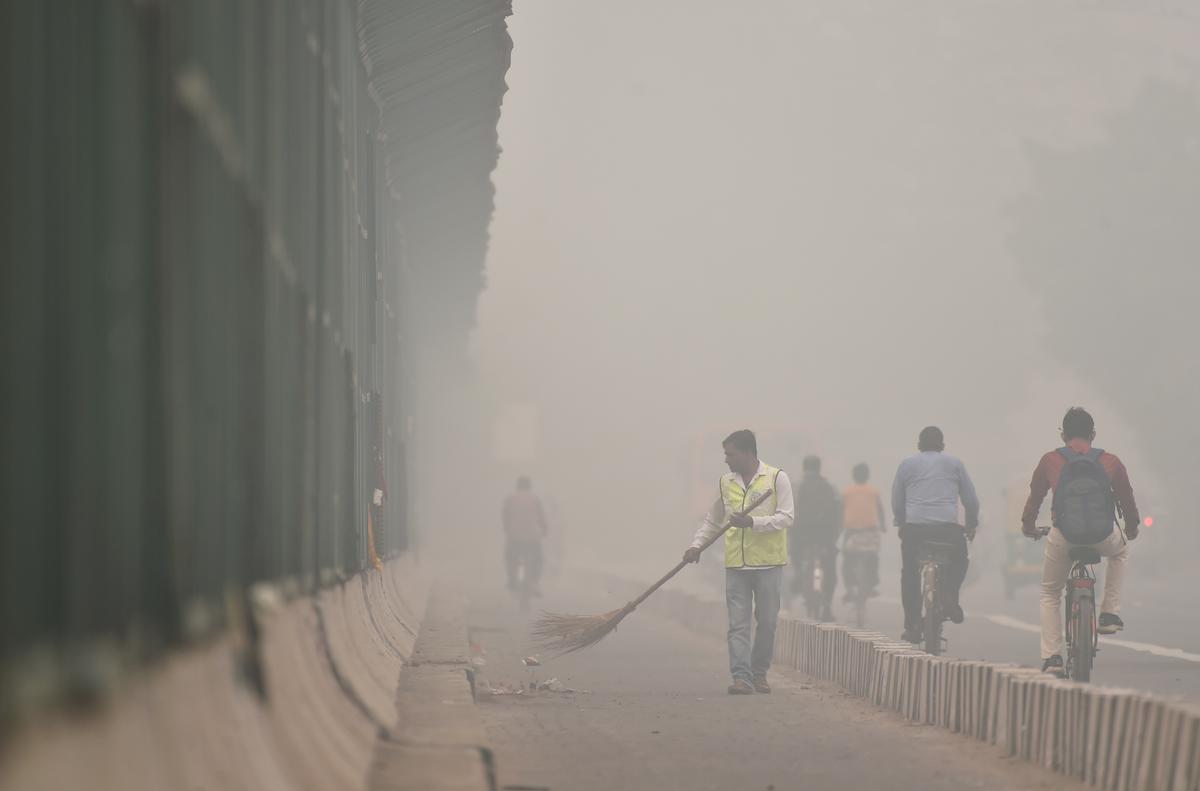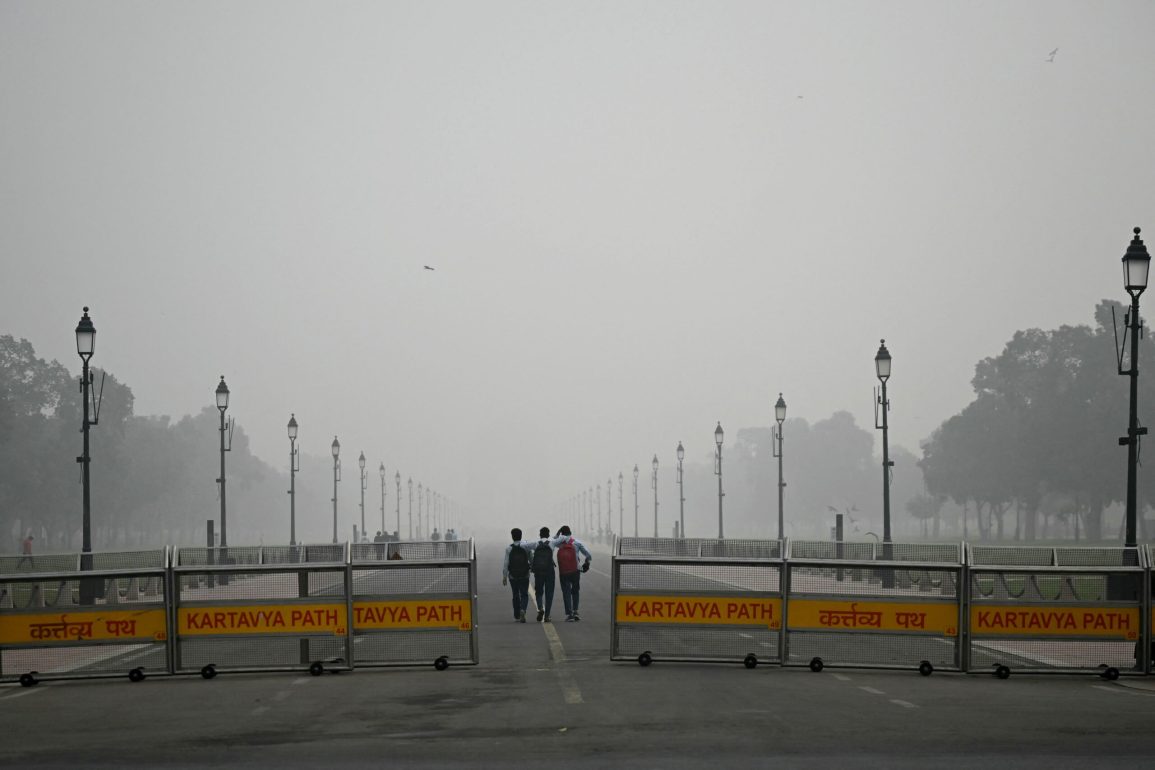Delhi, the capital of India, is facing severe air pollution, with the city waking up to a thick blanket of smog that has drastically worsened air quality. Pollution levels in Delhi and surrounding areas are now at least 30-35 times higher than the safe limits set by the World Health Organization (WHO).
This hazardous air quality typically occurs during the winter months, from October to January, due to a combination of factors including lower temperatures, increased vehicular emissions, dust, smoke, and crop stubble burning in neighboring states. Experts predict that the situation will only worsen in the coming days.
The Air Quality Index (AQI), which measures the concentration of particulate matter (PM 2.5) in the air, has reached alarming levels, with some parts of Delhi registering an AQI of 500, a level considered “severe.” These tiny particles can penetrate deep into the lungs, leading to respiratory and other health problems.
The situation is equally dire in satellite cities like Noida and Gurgaon, where AQI levels have also soared to the same critical levels. The pollution has caused poor visibility, leading to delays and cancellations of flights in and out of Delhi.

Satellite images shared by NASA show that the smog is so thick it is visible even from space, covering large parts of northern India and neighboring Pakistan. The toxic air has had a significant impact on public health. A recent survey revealed that 81% of families in Delhi and nearby cities reported at least one family member suffering health issues due to the pollution. Over a third of respondents had to purchase cough syrup in response to respiratory problems, highlighting the widespread effect of the pollution on people’s well-being.
In response to the crisis, the Delhi government has implemented its Graded Response Action Plan (GRAP), which includes measures such as banning the use of coal and firewood and restricting the operation of diesel generators for non-emergency services. However, these efforts have not been sufficient to mitigate the severe pollution levels. Authorities have also urged residents to limit outdoor activities, stay indoors, and use public transportation to help reduce emissions from private vehicles.
The pollution crisis in Delhi is part of a larger environmental issue affecting many Indian cities. India was ranked as the third-most polluted country in the world in 2023, following Bangladesh and Pakistan.
Rapid industrialization, combined with lax enforcement of environmental regulations, has contributed to the country’s worsening air quality. The lack of strict pollution-control measures in factories and the rapid pace of urban construction has further aggravated the situation, making air pollution a serious and persistent problem in India.

